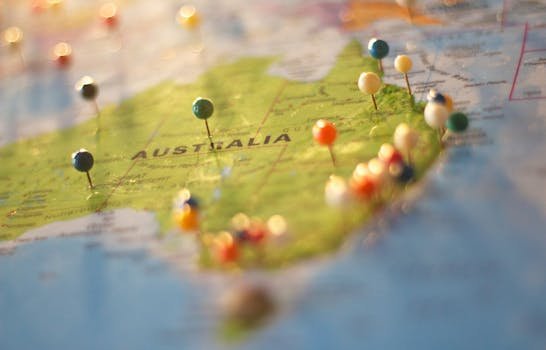Concerns are rising over children spending too much time on social media and joining platforms at inappropriate ages. While India hasn’t addressed this issue yet, Australia is taking action by proposing a ban on social media for users under 16. This growing concern may prompt similar measures in India.
Australia is taking a bold step that few countries have dared to follow, proposing a ban on social media for those under 16. Not to be mistaken for a blanket internet restriction, this initiative specifically targets platforms like Instagram and Facebook due to their potential harmful effects on young people, including impacts on body image, social anxiety, and digital dependency. The question is whether this measure will truly “weather-proof” young Australians from these issues.
Prime Minister Anthony Albanese stated “This one is for the mums and dads… who, like me, worry deeply about our kids’ online safety. Australian families, your government is on your side.” He also described the proposal, which is set to be introduced to parliament next week, as “world-leading” legislation to curb the “harm” social media inflicts on Australian children. While the specifics are still under discussion, it’s clear that if enacted, this legislation will have far-reaching implications, even for those young users already active on social media.
Some experts believe that banning apps like TikTok, Instagram, and Facebook only delays young people’s exposure to these platforms, rather than teaching them essential skills to safely navigate the online world. Previous efforts to restrict access, including those in the European Union, have largely been ineffective or met with pushback from tech companies. There’s also uncertainty around how such bans would be enforced, especially with the availability of tools to bypass age-verification.
In an open letter sent to the government in October, over 100 academics and 20 civil society organizations, led by the Australian Child Rights Taskforce, called on Prime Minister Albanese to prioritize “safety standards” for social media platforms instead of outright bans. They pointed to UN recommendations, which suggest that national policies should focus on providing children with safe opportunities to engage with digital spaces. At the same time, grassroots campaigners in Australia are pushing for these laws, arguing that bans are necessary to protect children from harmful content, misinformation, bullying, and other social pressures online.
Backlogs of Social Media
Facebook’s internal research, made public in 2021, revealed that Instagram was aware of its negative effects on teenage girls, especially around body image issues, self-esteem, and unrealistic standards of validation based on appearance. Studies indicate that children who spend over three hours daily on social media are twice as likely to experience mental health challenges like depression and anxiety, fueled by comparisons with others’ seemingly ideal lives. Social media usage can disrupt focus during school or homework, while browsing on mobile devices before bed is linked to poor sleep quality. Additionally, frequent social media exposure can impact brain areas related to emotions and learning—particularly significant as children and teens develop their sense of self between ages 10 and 19.
What can resistant bring as a challenge?
Young teens often resist restrictions, feeling entitled to the same access to technology as their peers. This resistance can lead to conflicts with parents, resulting in interpersonal stress and potential mistrust. Bans may not be effective; similar to alcohol restrictions, prohibiting access can sometimes increase desire. Tech-savvy teens are likely to find ways around limitations, which may also impact their ability to process online interactions in the future.Reducing social media time can also help lower risks of cyberbullying, online harassment, and body shaming. Furthermore, limiting app usage encourages children to spend more time outdoors, participate in physical activities, pursue hobbies, and adopt healthier habits overall. Excessive screen time often leads to a sedentary lifestyle, while balanced restrictions can promote a more active, engaged, and socially connected childhood.
But keeping the both sides in vision, challenge is what, how and when to educate young minds to divert and use their neural energy for their better future. Coming to a challenge in a country like India, ban and restrictions won’t change anything only, the real challenge of managing social media use among young people is complex. Simply imposing a ban or restrictions on platforms for those under a certain age might not have the desired impact, as enforcing these rules can be difficult given the sheer number of users and access points. Tech-savvy teens can find ways around restrictions, and blanket bans could push usage underground, making it harder for parents and educators to monitor online activities.
The real issue lies in determining the right approach, timing, and tools to educate young people on using digital platforms responsibly. With India’s vast youth population, the focus should ideally be on proactive digital education, helping young users understand the long-term impact of their online interactions and encouraging them to harness technology in ways that support their growth. Rather than a one-size-fits-all ban, developing age-appropriate digital literacy programs in schools, promoting open discussions at home, and setting practical boundaries can build a healthier digital culture. Empowering young users with the skills to navigate online spaces safely could be more effective and sustainable than enforcing restrictions that may lead to unintended consequences.
Like many other challenges, this issue requires ongoing discussion and a collaborative approach, particularly involving parents. A dedicated research team focused on understanding young minds and their digital behaviors is crucial. Australia has taken steps based on what they believe needs to be done, and now, it will be interesting to see what India contributes to this conversation in pursuit of meaningful change.
